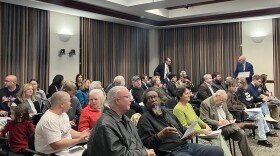-
The East Central Indiana Recycle and Reuse Center is a little over a year old. The site's founder is celebrating by preparing to expand across Wayne County thanks to a mobile recycling van.
-
The Ohio EPA has extended the online public comment deadline to Jan. 16, 2026.
-
The city has teamed up with composting service Queen City Commons to put drop-off bins for food scraps in four neighborhoods.
-
Some environmental advocates say they're concerned the change will fast-track wastewater permits for data centers while leaving out reviews that ensure public health and safety.
-
Northside, for example, used to be a big wetland.
-
Executive Director Chad Planner says implementing a fee is necessary to sustain the organization.
-
Fishing, however, will remain restricted for several years.
-
In mid-November, the EPA and Army Corps of Engineers announced a proposal for a new definition of the waters of the United States, limiting what qualifies for protection under the Clean Water Act.
-
While the two Butler County projects have support from some government leaders, some residents say they’re worried about environmental consequences and energy use.
-
"Where We Are Planted" explores eight people's experiences with the natural world, from cleaning up the the Mill Creek to working in community gardens.

Play Live Radio
Next Up:
0:00
0:00
Available On Air Stations










